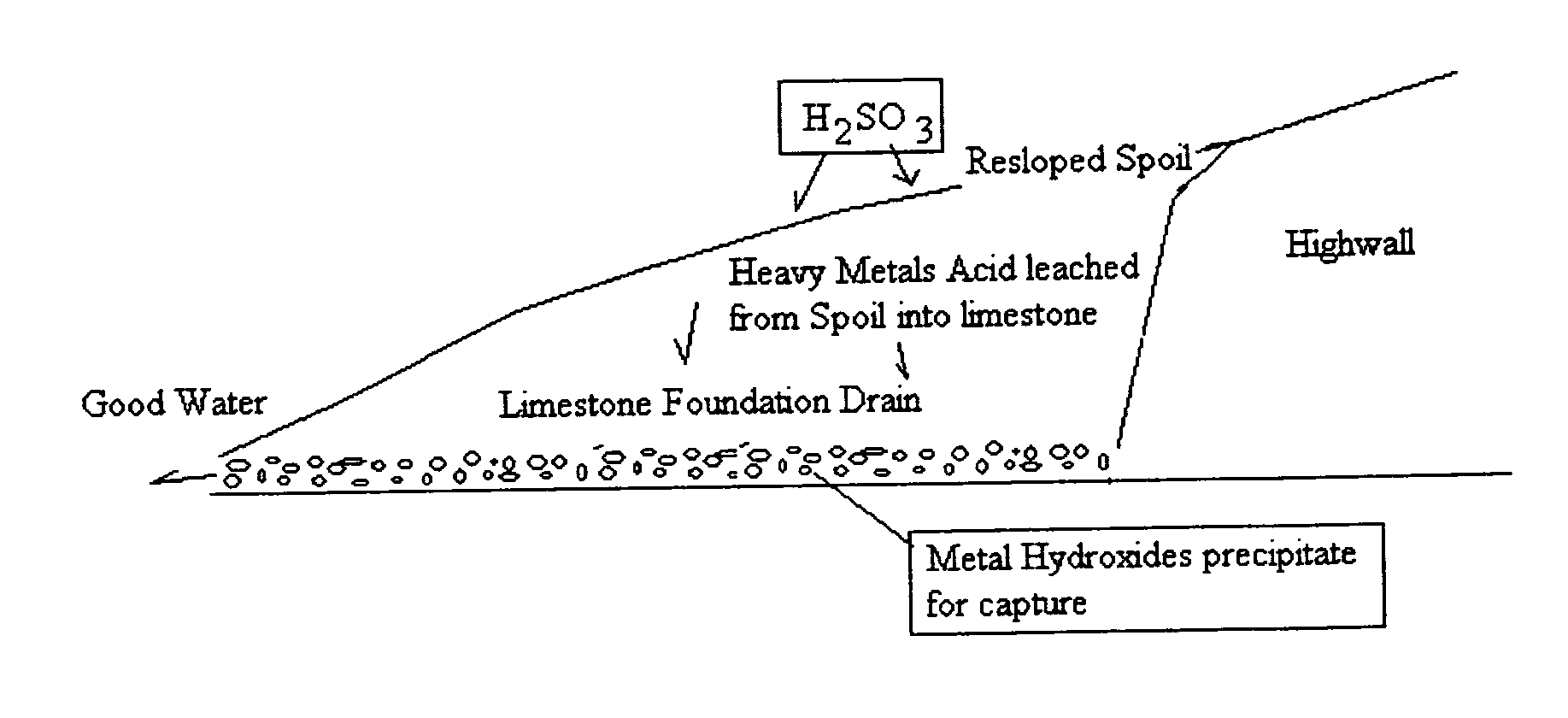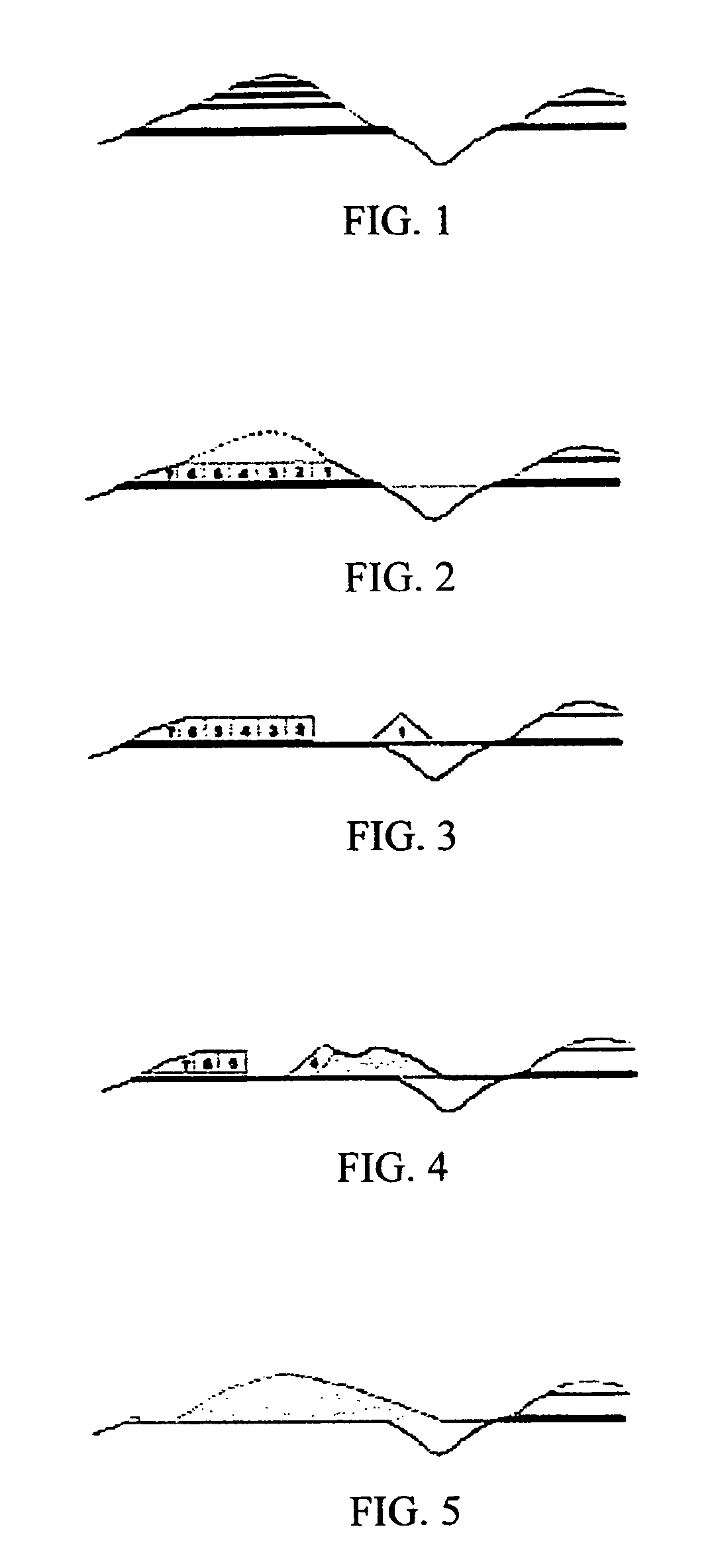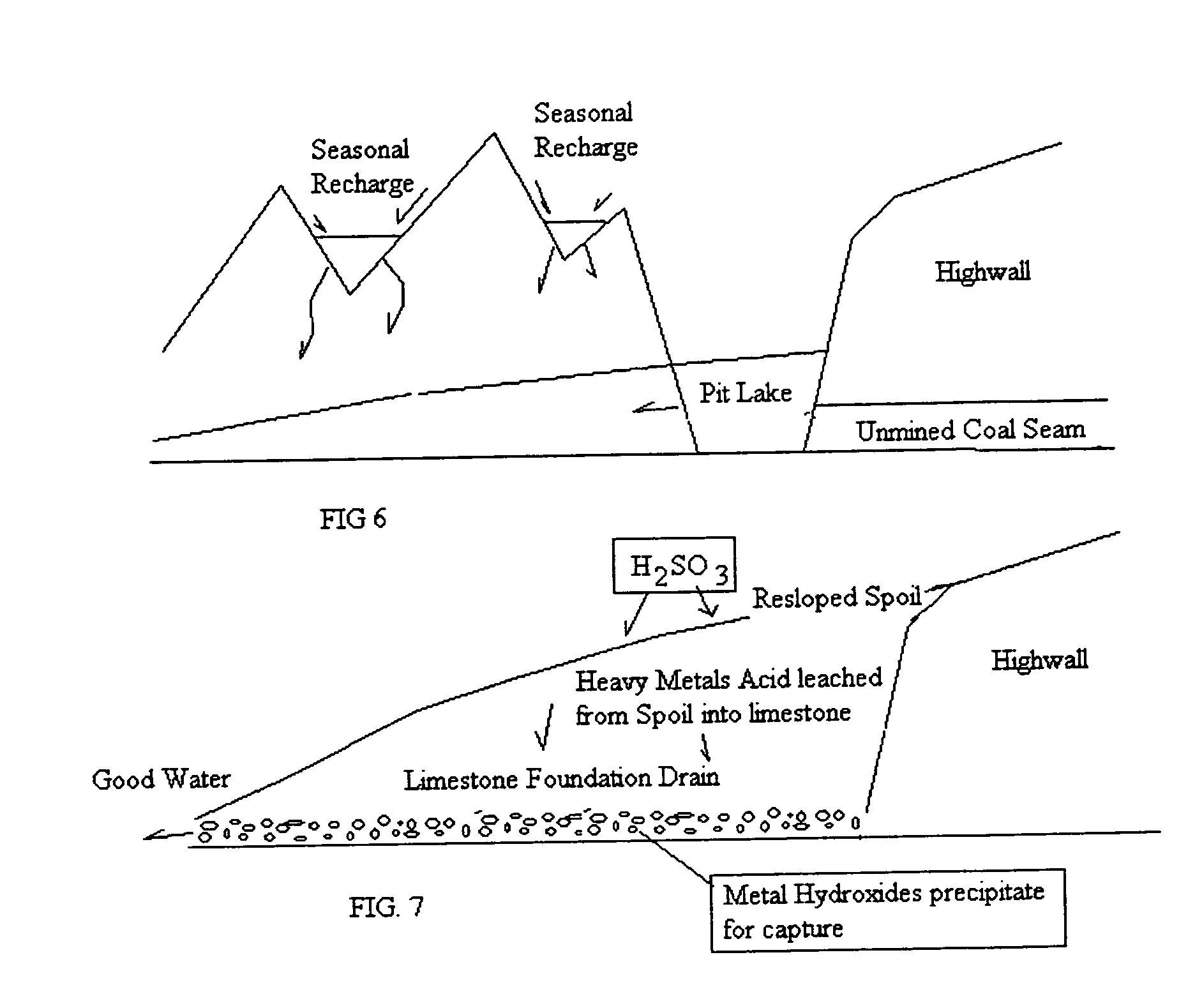Method of removing heavy metals in soils and water
a technology of soil and water and heavy metals, applied in the field of soil and water heavy metal remediation, can solve the problems of posing risks to human health and the environment, metals may spread into the surroundings, polluting new areas,
- Summary
- Abstract
- Description
- Claims
- Application Information
AI Technical Summary
Benefits of technology
Problems solved by technology
Method used
Image
Examples
Embodiment Construction
[0080]As stated in Wikipedia, http: / / en.wikipedia.org / wiki / Mountaintop_removal,
[0081]“Mountaintop removal mining is a form of surface mining that involves the topographical alteration and / or removal of a summit, summit ridge, or significant portion of a mountain, hill, or ridge in order to obtain a desired geologic material.
[0082]The MTR process involves the removal of coal seams by first fully removing the overburden lying atop them, exposing the seams from above. This method differs from more traditional underground mining, where typically a narrow shaft is dug which allows miners to collect seams using various underground methods, while leaving the vast majority of the overburden undisturbed. The overburden waste resulting from MTR is either placed back on the ridge, attempting to reflect the approximate original contour of the mountain, and / or it is moved into neighboring valleys.
[0083]The process involves blasting with explosives to remove up to 400 vertical feet (120 m) of ove...
PUM
| Property | Measurement | Unit |
|---|---|---|
| pH | aaaaa | aaaaa |
| pH | aaaaa | aaaaa |
| pH | aaaaa | aaaaa |
Abstract
Description
Claims
Application Information
 Login to View More
Login to View More - R&D
- Intellectual Property
- Life Sciences
- Materials
- Tech Scout
- Unparalleled Data Quality
- Higher Quality Content
- 60% Fewer Hallucinations
Browse by: Latest US Patents, China's latest patents, Technical Efficacy Thesaurus, Application Domain, Technology Topic, Popular Technical Reports.
© 2025 PatSnap. All rights reserved.Legal|Privacy policy|Modern Slavery Act Transparency Statement|Sitemap|About US| Contact US: help@patsnap.com



